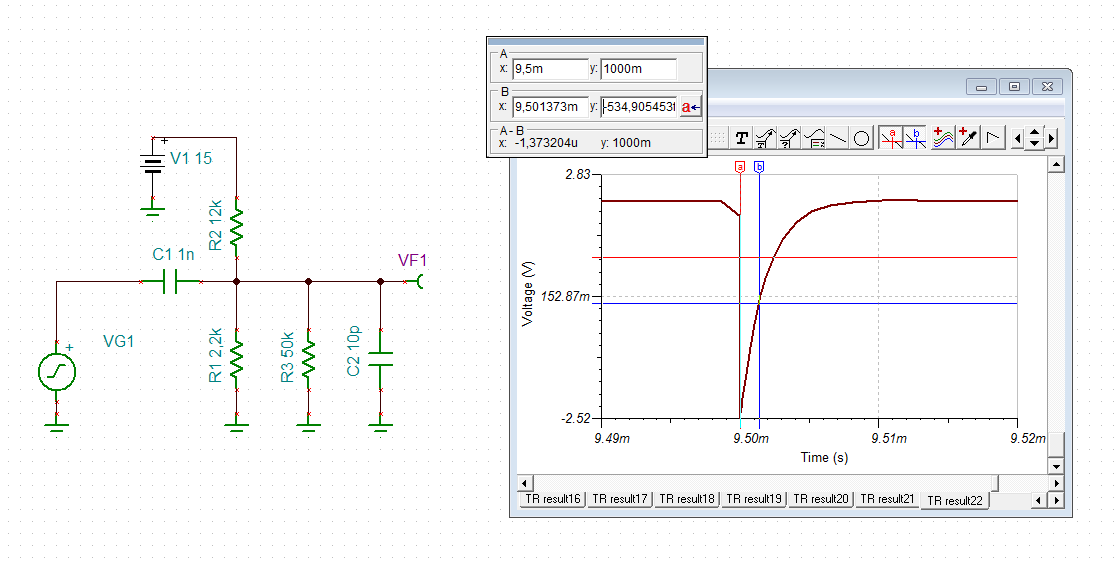Page 2 (f/V-Converter): Rated Voltage: +-15V, Range +-13V to +-20V
Page 3 (Absolute Maximum Ratings): Supply Voltage +-20V and now comes the confusing part for me: -Input … +- Vcc and +Input … +- Vcc
I hope this means the supply-Voltage equals +-Vcc, because that’s what I did.
Page 8: In fig.9 on pin 4 is -Vcc, pin 12 is + Vcc. The cermet potentiometer R5 needs +15V and -15V which are the same as the supply voltage in this case, or do I need the +-20V as listed on p.3
My chosen components for F_FS = 200kHz, D_FS = 0.25 are:
C1= 150pF; NP0 ceramic 1% tolerance
C2 = 1nF; ceramic 5% tolerance
C3 = 1nF; ceramic 5% tolerance
C_bypass = 100nF; ceramic (instead of 10nF)
R1+R3 = 40kOhm; 33kOhm metal film 1% tolerance and 10kOhm cermet potentiometer
R4= 10MOhm; +-10% carbon film
R5= 50kOhm; cermet potentiometer, 75ppm/°C
R6 = 12kOhm; carbon film
R7 = 2,2kOhm; carbon film
Since my +-Vcc is +-15V in my case, I connected +-15V to R5 and pin12/pin4. I tested with a square-wave-signal with +5V and F_FS = 50 Hz to 200kHz but I do not get any kind of response. Any ideas or did I misinterpret something wrong?
Thanks for the help and my thesis also thanks you for the help.



